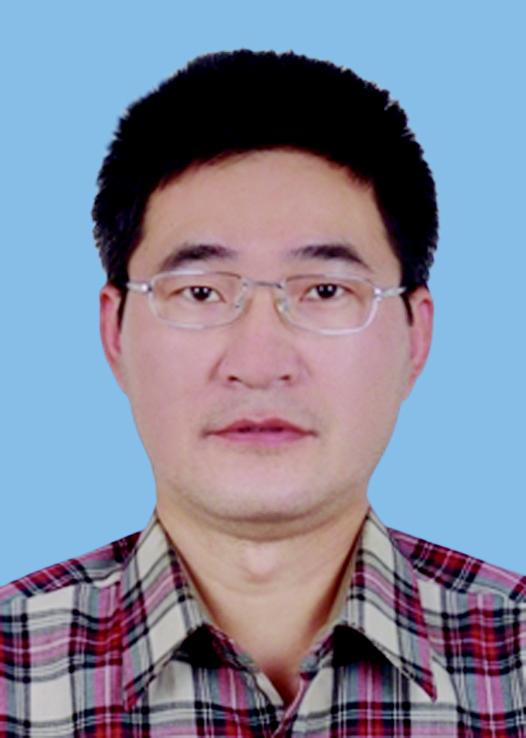| Basic information | |||||||||||
|
| Profile |
1.1 Personal Profile
Name: Linxiang Wang
Nationality: Chinese Date of birth: 20 January 1971
Place of birth: Hubei, P.R.ChinaMarital
1.2 Education(degree with field, institution)
1999 Ph.D., Mechatronic Engineering and Control
Zhejiang University, China.
1995 M.S., Mechatronic Engineering and Control
Zhejiang University, China.
1992 B.S., Fluid Power Transmission & Control
Anhui University of Technology, China.
2 Professional Experience
2011.06 – Present, Professor
College of Mechanical Engineering, Zhejiang University.
Department of Ocean Science and Engineering, Zhejiang University.
2008.03 – 2011.05, Chair Professor
Institute of Mechatronic Engineering, Hangzhou Dianzi University.
2006.03 - 2008.02 , Associate Professor
Mads Clausen Institute for Product Innovation, University of Southern Denmark,
Denmark.
2003.03 - 2006.02 , Assistant Professor
Mads Clausen Institute for Product Innovation, University of Southern Denmark,
Denmark.
2002.01 - 2003.02 , Post Doc.
Mads Clausen Institute for Product Innovation, University of Southern Denmark,
Denmark.
2000.09 - 2001.12 , Post Doc.
Industrial Liaison Research Institute, Kyung Hee University, South Korea.
1999.09 - 2000.09 , Post Doc.
Research Center of BaoShan Iron & Steel Company, Shanghai, China.
(co-funded by Shanghai Jiaotong University, China)
3 Research Experience and Interest
3.1 Research Interests
1 Smart Structures, systems, and devices.
2 Mechatronics, mathematical modeling.
3 Hysteresis in ferroelastic, ferroelectric, and ferromagnetic structures.
3 Model reduction and its Applications, parameter estimations, optimizations.
4 Numerical analysis of nonlinear PDEs.
3.2 Research Experience
Representative Research Activities:
Modeling of Control of Smart structures and Devices.
When thedynamics of smart materials and structures are involved, the modeling and control problems becomes more challenging due to the hysteresis phenomenon and the rate dependence feature in the dynamics. The Ginzburg-Landau theory forphase transition is employed to model the phase transitions induced in the material, whichaccounts for the nonlinear and hysteretic behavior. Feedback linearization is employed to transform the hysteretic systems to linear ones. The strategy have been applied in applications of various engineering problems involving ferroelastic, ferroelectric, magnetoelastic, and magnetorheological materials and devices. At the same time, the modified Ginzburg-Landau theory forphase transition has also been employed to model the microstructure formation and evolution.
Modeling, Simulation and Control of Shape Memory Alloys.
As a particular example of nonlinear thermo-mechanical problems, thedynamics of shape memory alloys (1D and 2D) have been modeled by a set of coupled partialdifferential equations. Chebyshev collocation methods and finite element methods have been employed to analyze the dynamical behavior of the alloys and phase transformationsunder various loadings.
Modeling and Parameter Identification of a Photocatalytic Reactor.
To optimize the photocatalytical reaction rates in a flow reactorfor desulphurization purpose, the fluid flow and chemical reactions were modeled by a set ofcoupled partial differential equations, and were analyzed by using computational fluid dynamics method. For the process optimization, a hybrid optimization method (genetic algorithmcombined with conjugate gradient methods) was employed to estimate a few model parameters, such as reaction rates for each component.
Optimal Control of the Fluid Flow and Heating Process in Metallurgical Furnaces.
For energy - saving purpose, the optimal control theory was appliedto adjust the heat flow and transfer processes in a metallurgical furnace (partialdifferential equation system). The firing operation was regulated to make the air temperaturein the furnace optimized for heating the slabs in the furnace with different initial temperatures.
Fluid Mixing Caused by Secondary Flows in a Twisted Curved Pipe.
It aims to mix viscous fluids without any agitator while keeping theflow laminar. The employed strategy is to induce chaotic advection by means of secondary flows in a twisted curved pipe. The chaotic mixing processeswere studied bycomputational fluid dynamics approach as well as experimental methods.
4 Teaching Experience and Service
4.1 Courses taught
2003 Fall, Mathematical Modeling for Mechatronic Engineering II
For Master students, together with Prof. R. V. N. Melnik (6 lectures / week).
2004 Spring, Mathematical Modeling for Mechatronic Engineering I
For Master students, together with Prof. J. Gravesen (3 lectures / week).
2004 Fall, Mathematical Modeling for Mechatronic Engineering II
For Master students, together with Prof. J. Gravesen. (6 lectures / week).
2005 Spring, Mathematical Modeling for Mechatronic Engineering I
For Master students, together with Prof. M. Deryabin (3 lectures / week).
2005 Spring, Mathematics Modulus II (Linear Algebra),
For undergraduate students (3 lectures / week).
2006 Spring, Mathematic Modeling for Mechatronic Engineering I
For Master students, (3 lectures / week).
2006 Spring , Semester Projects (Integrated Mechatronic System)
For Master students, (1 lecture / week )
2006 Fall Finite Element Analysis,
For Master students, (3 lectures / week).
2006 Fall Semester Projects (Control Engineering and System Analysis)
For Master students, (2 lectures / week )
2007 Spring, Mathematic Modeling for Mechatronic Engineering I
For Master students, (3 lectures / week).
2007 Spring , Semester Projects (Integrated Mechtronic Systems)
For Master students, (1 lecture / week ).
2007 Fall , Finite Element Analysis.
For Master students, (3 lectures /week).
2007 Fall Semester Projects (Variational Methods and Optimal Control).
For Master Students. (2 lectures/week).
2009SpringMathematical Modeling and Analysis of Engineering Problems.
For Master Students. (2 lectures/week).
2009Fall Numerical Analysis, Flow Power Transmission and Control.
For undergraduate Students. (3 lectures/week +3 lectures/week).
2010SpringMathematical Modeling and Analysis of Engineering Problems.
For Master Students. (2 lectures/week).
2012-Present, Spring, Numerical Analysis, For Master Students. (2 lectures/week).
2012-Present, Fall, Fluid Power Transmission and Control, For undergraduate Students. (3 lectures/week +3 lectures/week).
2014-Present, Spring, Smart Materials and Structures, For Master Students. (2 lectures/week).
4.2 Graduate student advised
2-3 Master students per year (on average).
1-2 Ph.D students per year (on average).
4.3 Services
Editorial Board Member:
American Journal of Materials Science and Technology
Scientific Journal of Mechanical Engineering ( in Chinese)
ASME member, IEEE member. Senior member of the Chinese society of theoretic andapplied mechanics.
Consultance for Center of Production Development in the University of Southern Denmark.
Review papers for: Journal of Vibration and Control, Current Opinion in Solid StateMaterials Science, International journal of nonlinear mechancs, Materials Science andEngineering. A , Solid State Science, Mechanics Research Communications, Journal ofMathematical Control Science and Applications, Journal of Zhejiang University,Journal ofPhysics D: Applied Physics.
5Publications
5.1 Journal ariticle(From 2005):
1. Dan Wang, LinxiangWang*, Roderick Melnik. Vibration energy harvesting based on stress-induced polarization switching a phase field approach. Smart Materials and Structures. 2017.015
2. Dan Wang, LinxiangWang*, RoderickV.N.Melnik. A hysteresis model for ferroelectric ceramics with mechanism for minor loops, Physic Letters A. 2016, 381(4): 344–350.
3. Dan Wang, LinxiangWang*, RoderickV.N.Melnik. A differential algebraic approach for the modeling of polycrystalline ferromagnetic hysteresis with sub-loops and frequency. Journal of Magnetism and Magnetic Materials. 2016,410:144–149
4. Dan Wang, LinxiangWang*, RoderickV.N.Melnik. A Preisach-type model based on differential operators for rate-de- pendent hysteretic dynamics. Physica B 470-471 (2015) 102–106
5. Cheng Zhang, Zhangwei Chen, LinxiangWang*. An investigation on the field strength and loading rate dependences of the hysteretic dynamics of magnetorheological dampers. Mech Time-Depend Mater (2015) 19:61–74
6. Linxiang Wang, Jun Yang, and Junbo Lei . Computational martensite re-orientation in shape memory alloys and the related hysteretic dynamics. Model. Simul. Mater. Sci. Eng. 2014, 22, 45006
7. Chen W F, Wang L X, Lv F Z. Modeling of the Stress-Dependent Hysteretic Dynamics of Ferroelectric Materials. 2014, the proceedings of the 5th International Conference on Manufacturing Science and Engineering, April 19-20, Shanghai, China. pp: 606-609.
8. (in Chinese)陈惟峰,王林翔,吕福在.基于压电陶瓷驱动的微小型数字液压泵综述[J].液压与气动,2014,10(1):18-25.
9. Du Xiuquan, Wang Linxiang, Tang Zhifeng, Lv Fuzai,Modeling the rate dependent hysteretic dynamics of magnetostrictive transducers. 2104, 3rd International Conference on Mechanical Automation and Materials Engineering, June 28-29, Wuhan, China. pp: 312-316.
10. L.X.Wang, R.V.N. Melnik, Nonlinear dynamics of shape memory alloy oscillators in tuning structuralvibration frequencies. Mechatronics22(2012)1085–1096 (SCI, Impact Factor:1.3).
11. (in Chinese)金方银,王林翔,刘荣,张诚,基于非凸本构模型的磁流变流体圆管流动分析, 功能材料,2012,43(4):413-416.
12. Fangyin Jin, Rong Liu, Linxiang Wang. Comparison of Three Constitutive Models for the Analysis of LaminarMagnetorheological Fluid Flows. Advanced Materials Research. 2012 Vols. 378-379 : 151-156
13. L. X. Wang, RVN, Melnik, F. Z. Lv, Stress induced polarization switching and coupled hysteretic dynamics in ferroelectric materials, Frontiers of Mechanical Engineering, 2011. 6(3):287-291
14. Rong Liu, Linxiang Wang, Researches on Differential Model ofMagnetorheological Dampers in the Dependence on the Loading Rates, Advanced Science Letters, 2011, Vol. 4, P: 814–818.
15. L. X. Wang, Numerical simulation of microstructure growth caused by twinning and detwinning in shape memory alloys, Acta Mechanica Solida Sinica, 2010,23(S.Issue):204-209
16. L. X. Wang, RVN, Melnik, Low dimensional approximations to ferroelastic dynamics and hysteretic behaviour due to phase transformations,ASME Trans, Journal of applied mechanics,2010,77: 031015。
17. L. X. Wang, M. Willatzen, Extension of the Landau theory for hysteretic electricdynamics in ferroelectric ceramics, Journal of Electroceramics,2010,24(1):51-57
18. L. X. Wang,RVN, Melnik,Control of coupled hysteretic dynamics of ferroelectric materials with a Landau-type differential model and feedback linearization,Smart Materials & Structures, 2009,18(7):074011.
19. L. X. Wang, M. Willatzen, Modelling of nonlinear dynamics for reciprocal multi-layer piezoceramic transducer systems,Applied Mathematical Modelling, 2009, 33:2263-2273.
20. L. X. Wang, R. Liu, R. V. N. Melnik, Modeling large reversible electric-field-inducedstrain in ferroelectric materials using 90oorientation switching, Sci China Ser E-TechSci,2009, 52(1): 141-147.
21. M. Willatzen, L. X. Wang, and L.C. Lew Yan Voon, Electrostriction in GaN/AlNheterostructures, Superlattices and Microstructures, 2008, 43(5-6): 436-440.
22. L. X. Wang, R. V. N. Melnik, Modifying macroscale variant combinations in 2Dstructure using mechanical loadings during thermally induced transformation, MaterialScience and Engineering A, 2008, 481-482:190-193.
23. L. X. Wang, R. V. N. Melnik, Simulation of phase combinations in shape memory alloys patches by hybrid optimization methods, Applied Numerical Mathematics, 2008, 58 (4):511-524.
24. M. Willatzen, L.X. Wang, Mathematical modelling of one-dimensional piezoelectric transducers based on monoclinic crystals,Acta Acustica united with Acustica, 2007, 93 (5):716-721
25. L. X. Wang, R. V. N. Melnik, Thermo-mechanical wave propagation in shape memory alloy rod with phase transformations, Mechanics of Advanced Materials and Structures, 2007, 14 (8):665-676.
26. L. X. Wang, R. V. N. Melnik, Finite volume analysis of nonlinear thermo-mechanical dynamics of shape memory alloys,Heat and Mass Transfer, 2007, 43(6):535-546
27. L. X. Wang, R. V. N. Melnik, Numerical model for vibration damping resulting fromthe first order phase transformations, Applied Mathematical Modelling, 2007, 31:2008-2018.
28. L.X.Wang, and M. Willatzen, Nonlinear dynamical model For hysteresis based onnon-convex potential energy,ASCE, Journal of Engineering Mechanics, 2007, 133(5):506-513.
29. L. X. Wang, R. V. N. Melnik, Model reduction applied to the squareto rectangular martensite transformation using proper orthogonal decomposition, Applied Numerical Mathematics, 2007, 57:510-520.
30. L.X. Wang, M. Willatzen, Modelling of nonlinear responses for reciprocal transducers involving polarization switching,IEEE Transactions on Ultrasonics, Ferroelectrics, and Frequency Control,2007, 54(1):177-189.
31. L. X. Wang, R. V. N. Melnik, Mechanically induced phase combination by Chebyshevcollocation methods, Material Science and Engineering A, 2006, 438-440 : 427-430.
32. L. X. Wang, R. V. N. Melnik, Dfferential-algebraic approach for coupled problems ofdynamic thermoelasticity, Applied Mathematics and Mechanics, 2006,27(9):1185-1196.
33. L. X. Wang, R. V. N. Melnik, Two-dimensional analysis of shape memory alloys under small loadings, International Journal of multiscale computational engineering, 2006, 4 (2):291-304.
34. L.X.Wang, H. Kamath, Modelling hysteretic behavior in magnetorheological fluids and dampers using phase-transition theory,Smart Materials and Structures,2006, 15(6):1725-1733.
35. L. X. Wang, R. V. N. Melnik, Dynamics of Shape memory alloy patches with mechanically inducedtransformations,Discrete and Continuous Dynamical System,2006, 15 (4):1237-1252.
5.2 Peer reviewed conference papers (from 2005):
1. Dhote, R. P., Melnik, R.V.N., Zu, J.W., Wang, L.,Microstructures of constrained shape memory alloy nanowires under thermal effects, Proceedings of the ASME 2010 Conference on Smart Materials, Adaptive Structures and Intelligent Systems (SMASIS-2010), Philadelphia, USA, 2010.
2. Melnik, R.V.N., Dhote, R.P., Zu, J., Tsviliuk, O.I., Wang, L.X., Numerical analysis of complex systems evolution with phase transformations at different spatial scales, Proceedings of the Tength International Conference on Computational Structures Technology, Eds. Topping, B.H.V. et al, Civil-Comp Press, Stirlingshire, Scotland, 2010..
3. Melnik. R., Wang, L.X., Phase-field Approach to Studying Shape Memory Effects and Thermomechanical Properties of Low Dimensional Nanostructures, Advanced Research in Physics and Engineering (in book series: Mathematics and Computers in Science and Engineering), Eds. Martin, O. et al, Proceedings of the 2nd International Conference on Nanotechnology (University of Cambridge, UK, February 20-22, 2010), pp. 125--130, 2010.
4. Melnik, R.V.N., Wang, L.X., Tsviliuk, O.I.,Phase transformations and shape memory effects in finite length nanostructures, Proceedings SPIE, Behavior and Mechanics of Multifunctional Materials and Composites, Eds. Ounaies, Z. and Li, J., Vol. 7644,pp. 76440I-76440I-10, San Diego, USA, 2010.
5. Melnik, R., Tsviliuk, O., Wang, L., Low dimensional nonlinear thermomechanical models describing phase transformations and their applications,Recent Advances in Applied Mathematics (Book Series: Mathematics And Computers In Science And Engineering), Proceedings of the 14th International Conference on Applied Mathematics, Spain, Eds, Bulucea, C.A. et al, ISBN/ISSN:1790-2769, 978-960-474-138-0, pp. 83-88, 2009.
6. L.X.Wang, C. Q. Zhou, C. S. Feng, Nonlinear differential equation approach for the two-way shapememory effects of one-dimensional shape memory alloy structures, On the Second International Conference on Smart Materials and Nanotechnology in Engineering, 2009, Proc. of SPIE Vol. 7493, 74931Z
7. R.Melnik, L.X.Wang, Developing mesoscopic models describing phase transformations in finite nanowires and annoplates, The III international conference on computational methods fro coupled problems in Science and Engineering, Italy, June 2009, 4 pages, B.Schrefler, E.Onate and M. Papadrakis (Eds. ), CIMNE, Barcelona, ISBN:978-84-96736-65-8.
8. Cheng Zhang, Linxiang Wang, Dynamic Models for Magnetorheological Dampers And its feedback linearization,Advanced Material Research,2009, Vol 76, 1205-1208.
9. L. X. Wang, Hysteretic dynamics of ferroelectric materials under electromechanicalloadings. Paper SMASis-333, in the Proceedings of SMASIS08 ASME Conference onSmart Materials, Adaptive Structures and Intelligent Systems. ISBN:978-0-7918-3839-6, October 28-30, 2008, Ellicott City, Maryland, USA.
10. L.X.Wang, M. Willatzen, and R.V.N. Melnik, Modelling Nonlinear Electro-MechanicalEffects in Nano-Heterostructures Using Domain-Decomposition Methods, proceedings of the ninth international conference on computational structures technology, Greece, Athens, Sep 2th - 5th. 2008, ISBN: 978-1-905088-22-5.
11. L. X. Wang, R. V. N. Melnik, Phase Transformations in Finite Length Nanowires:Analysis with Mesoscopic Models, proceedings of the sixth international conference on engineering computational technology, Greece, Athens, Sep 2th-5th. 2008,ISBH: 978-1-905088-25-6.
12. L. X. Wang, R. Liu, R. V. N. Melnik, Feedback Linearization of Hysteretic Thermoelastic Dynamics of Shape Memory Alloy Actuators with Phase Transformations,Advanced Materials Research, 2008, (47-50):69-72.
13. L. X. Wang, Y. Chen, and W. L. Zhao, Macroscopic Differential Model for Hysteresisand Buttery-Shaped Behavior in Ferroelectric Materials, Advanced Materials Research, 2008, (47-50): 65-68.
14. L. X. Wang, M. Willatzen, R. V. N. Melnik, Modelling of reciprocal transducer system accounting for nonlinear constitutive relations, Proceedings of World Congress onEngineering 2007, July 2-4, London, pp:1242-1246 ISBN:978-988-98671-2-6.
15. L. X. Wang, R. V. N. Melnik, M. Willatzen, Feedback linearization of hysteretic dynamics of smart materials and devices, Proceedings of 10th International Conferenceand Exhibition of the European Ceramic Society, June 17 - 21, Berlin, 2007.
16. M. Willatzen, L. X. Wang, and L.C. Lew Yan Voon, Electrostriction in GaN/AlNheterostructures, in the Proceedings of PLMCN7, Havanna, Cuba (2007).
17. R. Melnik, D. Roy Mahapatra, L. X. Wang, A. Roberts, Numerical Methods for Coupled Nonlinear Problems of Dynamic Thermoelasticity and Shape Memory Alloys Modelling,Int. Conf. on Computational Methods of Coupled Problems in Science and Engineering,2007, E. Onate, M. Papadrakakis and B. Schreer (Eds), CIMNE, Barcelona,2007, ISBN:978-84-96736-18-4.
18. L. X. Wang, R. V. N. Melnik, Modelling Frequency Adjustment Effects Using ShapeMemory Alloy Oscillators, in Proceedings of the Eighth International Conference onComputational Structures Technology, B.H.V. Topping, G. Montero and R. Montenegro, (Editors), Civil-Comp Press, Stirlingshire, United Kingdom, paper 99 (13 pages),ISBN 1-905088-07-8, 2006.
19. L. X. Wang, R. V. N. Melnik, Numerical model for thermo-mechanical wave propagation with phase transformations, in proceeding of the third European conference onComputational Mechanics (CD-Rom), Lisbon, Portugal, June 5th - 9th, paper 1438 (12pages), 2006.
20. J.Gravesen, B. Lassen, R. Melnik, B.Picasso, R. Piche, N. Tsfulobiv, L.X.Wang, Determination of distance from a 2D picture, Journal of physics:conference series, Vol.52. pp 46-57, 2006.
21. M.Willatzen, L. X. Wang, Y. Y. Feng, Nonlinearities and hysteresis phenomena inreciprocal ultrasound systems, Proceedings of IEEE International Ultrasonics Symposium, 2005, Rotterdam, Netherland.
22. R. V. N. Melnik, L. X. Wang, and D. R. Mahapatra, Numerical models for biocompatible shape memory materials and their biomedical applications, in Proceedings of the17th World Congress on Scientific Computation, Applied Mathematics and Simulation,Eds. P. Borne et al, 7 pages, CD-ROM, ISBN 2-915913-02-1,2005




